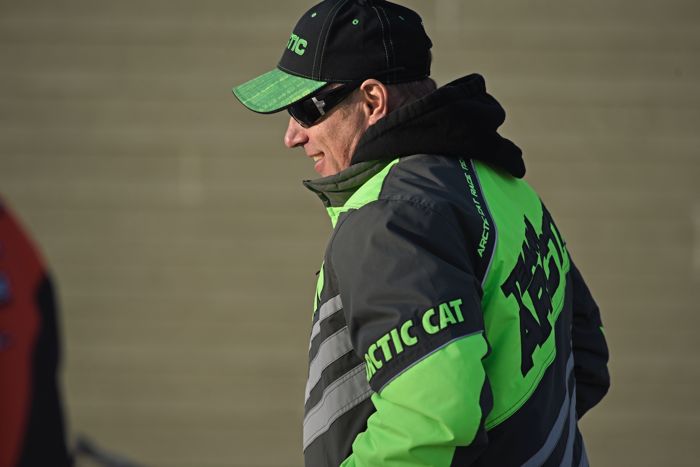
By all accounts, Team Arctic delivered a record-breaking performance during the 2018 snowmobile racing season. No hype, it was perhaps the winningest season by a single brand ever.
As Team Arctic Racing Manager, Mike Kloety is the person who oversees the enormous support system for the entire Arctic Cat racing program. He’s also the first person to tell you that he’s one of many, many people who helps make it possible.
Mike’s been part of the program since 1994 and has pretty much seen it all during his tenure. Here’s what he has to say about the 2018 season and what’s to come for 2019.

AI: Congratulations on one of the most remarkable race seasons that I’ve ever seen, or read about for that matter. Let’s start by walking through some of the highlights.
Kloety: To start the ISOC snocross season off like we did in Duluth and Jackson Hole was a little surreal. I can tell you we didn’t want to see the long Holiday break come, we would have all liked to keep the throttle pinned and keep racing. Other than Ryley Bester being banged up I think we were all pretty healthy and when things are going that good why stop. Coming back for round three at Canterbury was like the season was starting all over again and fortunately we picked up where we left off and kept finding our way to the podiums.
Winning the 50th edition of the SOO 500 enduro was very cool. There is so much history in that event and being the 50th edition winner will always be a special memory for many. That was also the best SOO race I have watched and many tell me the closest race ever, let alone the big names racers and teams that battled right to the end. The burn out after the victory lap was also way cool.
The most satisfying part of this season I still think is all the new winners I got to shake hands with at the podiums and or finish lines. That never gets old.
AI: Is there any historical context to compare this season with?
Kloety: I have been very fortunate to be involved with Team Arctic now since 1994 and I feel we have had many very successful race seasons, so many that it’s tough to point out any particular statistic. However, this year’s ISOC National year-end Points championships and top-3’s [Team Arctic racers won 12 of 14 points championships. –Ed] is one stat that might be a new record for one manufacturer.
AI: How and why did everything come together for such a successful season?
Kloety: In a nutshell, our snocross success happened because we have great racers and teams who work really hard to be the best they can, plus the 2018 ZR 6000R SX race sled was simply better than the competition.
Our continued success in cross-country was largely the result of our team’s depth. The ZR 6000R XC race sled is good, but it’s not head-and-shoulders better than the competition like our snocross sled was this year.
AI: Why was the ZR 6000R SX race sled so good?
Kloety: The race and engineering teams put a lot work into it last year, largely as a result of the snocross rule change where the Pro class would be on stock sleds. As a result of that rule change, the snocross sled project got a majority of our off-season focus. We were able to use Tucker Hibbert in spring testing for the first time in many years and his desire to win pushed the whole group. Many of the changes made were items our Pro Open guys had already been running in 2017 and prior. Other changes were new and helped the sled even more.
AI: You were against the snocross rule change this season that forced the Pro class to use Stock sleds. How do you feel about it now?
Kloety: It isn’t that simple. I was and still am against the rule as it went in to play and the reasoning behind it, however I was always OK with going to stock engines rather than mod engines.
My main complaint about the new rule is that I’m worried about how racing Stock sleds means that progression and engineering slows down because there isn’t an Open class to experiment and test in. Now with Stock class racing for the top Pro’s, we simply can’t do much to the sleds. And the little things that we wonder about trying leads us down a path where we have to question whether it’s legal or not.
We saw several examples on other brands this past winter where they tried things that we thought were illegal, a race circuit thought was illegal, but ISR deemed was legal. That grey area is really, really tough.
AI: So you’re good with the rule now, or not?
Kloety: I’m mixed. I am glad the new rule pushed our sled to its current level as quick as it did, although I’m not sure the competition shares that sentiment. I think the rule needs another year or two to really play out. I am curious to see how the spring rules meetings go and get everyone’s take on the season.
Historically Arctic Cat has been very strong in Pro Stock racing. Four or five years ago the Pro’s used to race both mod and stock sleds. I never wanted that to change because I liked when they raced both. I liked how the Pro’s got us set-up info that we could push to all our riders.
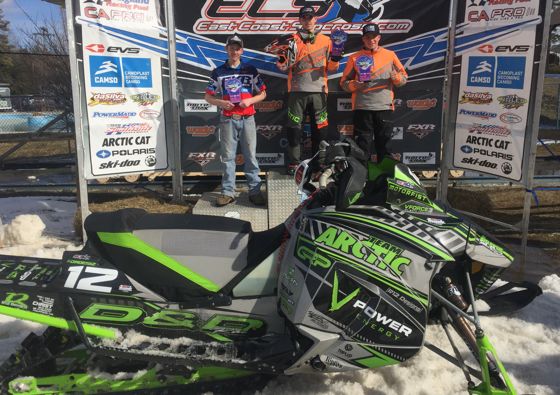
AI: Were there any racers who surprised you this year?
Kloety: I don’t like the word surprised. There were so many racers that had great races and got their first win or maybe their biggest win thus far and or just an all around great year. Jake Weir, rookie Pro in CSRA ended with three wins and is the youngest racer in CSRA to win a Pro Race; Dylan Roes (above) and Bradley Tatro dominated the Pro Lite class in ECS, a circuit that Arctic Cat has struggled in for years; Taven Woodie winning two Pro Women’s National races at just 14-years-old, that’s a really big deal; I could go on and on.
AI: What do you think the overall health is for snocross and cross-country racing?
Kloety: Both venues have good numbers in the young racer classes and I would love to see them keep getting bigger. Cross-country racing seems stable with its overall numbers and I think if we would get good early snowfall this venue would improve. There are a couple classes that need more participation though. The ice racing events are good, you can pretty much plan on the lakes freezing up but entry numbers prove that point-to-point, good terrain events will bring in more racers.
The National snocross events seem in good shape. CSRA is solid and I really like their youth numbers, and their Pro class is starting a youth movement with some new names as well. ECS just finished their season and I think they found some nice new venues and in talks with them to help grow their youth entry level racing also.
The regional snocross racing in MN, WI and MI still seems on the downside and I am not sure what can really help there exactly, I know many have chosen to follow the National circuit full time and that stresses the time and budget and there is nothing happening with snocross out west any more. I would like to see the 200 and entry level classes grow in all venues.
If there was one area that I worry about it is the stigma that racers and their parents have that they need to get into one of the “Super Teams” to compete. I don’t believe this a path that racers must take. I worry if we lose more [Super Teams] that some people will lose their enthusiasm.” Correct or not, those teams represent the goal for so many upcoming racers. It’s what their aiming for, when in reality they can keep racing without being on a so-called super team.
AI: Team Arctic won vastly more than its fair share, but it didn’t win everything. In USXC Pro Stock, it maybe wasn’t quite the season some expected. What’s your thought a about that?
Kloety: The cross-country race season was kind of a crazy this year. It started late and then it seemed like we were racing every weekend with a different sled set-up. Ice one weekend then a ditch race the next, and so on. I know this wasn’t the plan but Mother Nature forced her hand and USXC did the best with it.
Our race sled had a few changes from the year before, although not anything substantial in the racers’ eyes. Any change is substantial if people really knew how much work is involved no matter how small.
My heartbreak award goes out to Zach Herfindahl. Man, he and the Christian Brothers Racing team went through all the same high-level preparation but things just didn’t go their way. He was healthy and faster than ever but had too many mechanical issues. At the end of the day they were out of their control, which made it harder to stomach. Don’t push any panic buttons here we have a good team and we will keep getting them better equipment to race with and we will be fine. The competition here is very good and makes for great racing.
AI: Fair enough. I’ve seen it happen when a particular brand has a strong season, they sometime coast a bit into the next year while the other brands work extra-hard in the off-season. Then next year the tables turn. Is this off-season one in which Team Arctic coasts a bit?
Kloety: There is never any coasting with this group, but priorities play a role in what changes come to life and when in each model. Again, any change we make takes a lot of effort by many people to make happen. I think we would be crazy to make huge changes in our snocross sled but some nice small improvements can go a long way in keeping us out front. The last thing you want to do is take a step back and not learn anything from it.
AI: I don’t think it’s any secret that the other brands can copy some of the things that made Arctic Cat sleds so successful this year, namely the 136-in. track length and taller spindles from the ZR 6000R SX snocross sled. Does this possibility worry you?
Kloety: As long as we keep them playing catch up they can try copy all they want. I worry more about the leapfrog move. We know both of them raced the 136-in. track for a couple years in their mod sleds, heck they were buying the tracks from Arctic Cat. We see and feel that each brand has its strong points to them and our goal is to make our sled better where we feel it is needed.
AI: The Pro class rule change to use Stock sleds in snocross made it a lot more difficult to test new ideas this season. How will that affect sled development?
Kloety: It slows it down some and it costs us more time and money to get the testing done. In the past we used the open class to test and evaluate. We were already at the racetrack, which is the perfect place to test with our best riders.
Now we have to schedule extra test sessions at practice tracks and get riders together to run through all the scenarios and at the end of the day you still didn’t achieve a real race condition.
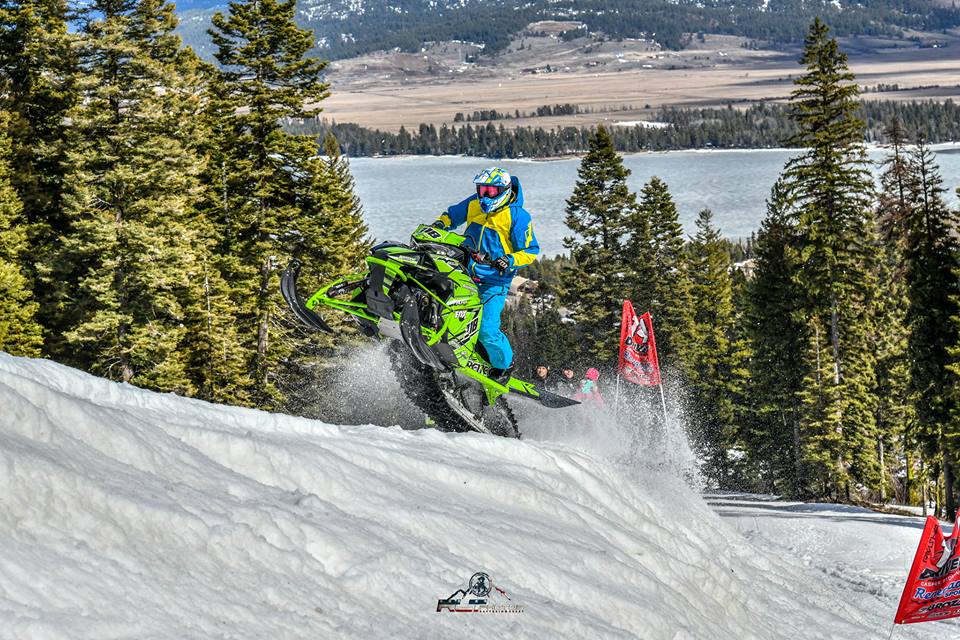
AI: Let’s talk about some of the other forms of racing. Can you bring us up to speed on how Arctic Cat is doing in Hillclimb, drags, speed runs and oval?
Kloety: Hillclimb racing got off to a slow start as Mother Nature didn’t bless the West with the snow they normally get. Their first couple events didn’t happen as scheduled. Now they are about four races into it pretty much all in a row. Visiting with the guys at Jackson a couple weeks ago, many of them are just starting to get their sleds broke in and dialing in the new motor and chassis.

Our drag and speed run teams are going great and posting new world records pretty regularly it seems. The big 4-stroke motors are still growing in horsepower, numbers and popularity. Some of the speeds and times are impressive, like 15-year-old Ryan Ensor smashing the 1000-foot speed record on the Warning family’s new “Frozen Assets 2” Arctic Cat speed run sled, going 188mph run in Forest Lake, Minn., then hitting 191.5 mph two weeks later at the NSSR event in Green Bay, Wis.
Oval racing is still stuck in a rut. There are a lot of people that love that venue and I was and still am working to grow stock class racing. I was hoping to see it grow quicker than it has. There is a spark of interest there now and we need to add fuel to the flame. The Factory 600 class has shown signs of life so let’s hope we can find ways to grow it.
Our SOO enduro program has some dedicated teams so I like how that is looking. Now we need to work on the MIRA series and help get them some more events and more Arctic Cat teams to chase after. Cadarette Racing has done a great job for us in not only sparking our SOO enduro interests but also in the MIRA events in both the Stock and Mod classes.
AI: When I look at the results of hillclimb from this year, and specifically the Jackson World Championships, it seems like Team Arctic racers maybe aren’t winning their share of the events. Do you agree and, if so, what factors are at play there?
Kloety: The results we put up in snocross and cross-country racing this year is a tough act to follow. If there was one area of hill climbing we need to attack better, it’s the stock classes.
Our current Mountain product is a very good and tough. Remember the 8000 C-TEC2 motor is brand new this season, as are a few of the driveline pieces. It will take some time to get our stock sleds where we want them for actual Hillclimb racing purposes. All new clutching and gearing options need to be tested as well as tuning the suspensions to match.
I think the Improved and Mod classes are more attractive because it gives the racers and teams more freedom to make changes that the Stock classes don’t allow, so you see our results are much better there. Speedwerx has been a great supporter with engine packages. I am more than confident that our program will be successful, but it will just take more time, as hillclimb racing is much different than just hill climbing.
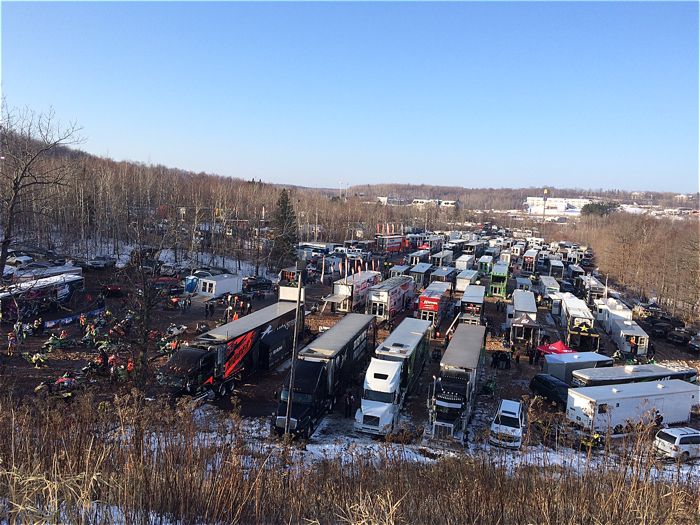
AI: What are the biggest barriers to growing snowmobile racing?
Kloety: Cost is a quick scapegoat, but there are actually other factors that are probably even bigger hurdles.
One is the spare time we schedule in our everyday lives today stops people from trying new things. For the youth it is difficult to be in a school sport and try racing as well.
Racing can also be intimidating to get into if you don’t start at the ground level, some venues are worse that others, thus the need to get as many started when they’re young.
There are fewer regional circuits today so closer access to a race circuit might be one. The plus side is manufactures build very good race-ready sleds right out of the box and there is great info that newcomers can easily access online to find out which options best suites what racing you want to do.
AI: What are the challenges you see going into next year?
Kloety: The biggest challenge is completely out of our control: the weather. When it snows, people ride and are into the sport in a big way. The size of snowmobile racing is really a percentage of the total size of the sport of snowmobiling. When the sport is big, the size of racing is also big. And when the sport is smaller, the pool of racers becomes smaller too.
I worry that, after too many poor years, how many times can one get their hopes up only to be disappointed and or take up another winter activity. I know there are many diehards that travel to the snow wherever it is and that is awesome but that won’t grow the industry like we all would like to see.
Keeping as many racers racing is my day-to-day biggest challenge.
AI: What are you excited about for about next race season?
Kloety: One of the things that I look forward to each year is to see how the racers have grown, not only in size but as a person, and which ones have been able to bring their game to the next level. So many move up to the next level class, which is a big step no matter which class we are talking about.
I also get really excited to see how all the brands’ sleds stack up against each other at the first couple races of the season.
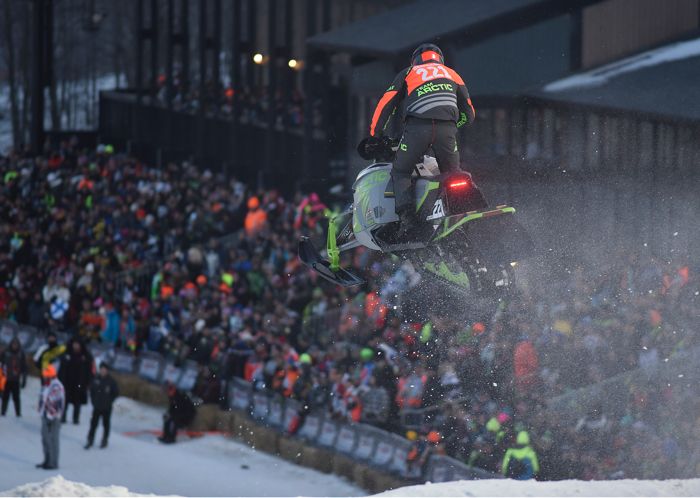
AI: Are there any racers who you see making the jump to Pro class next year? What about Dan Benham and Jacob Yurk in Snocross? David Brown in cross-country?
Kloety: I am only going to speak for what I know as of today. Our plan is to move Dan Benham Jr. to the Pro class. Not only did he have a very good year results wise but I saw how he went about his business and all the little things that made him better, that he was getting ready to make that move to the Pro class.
Jacob Yurk is probably the racer that I was the happiest to see have the success that he did. Coming off a tough rookie season where he switched brands, jumped classes, joined a new team and moved away from home – each of which is a big hurdle – to come back this year and run like he did was awesome. He’s a great kid from a great family. I think the plan for him and the Christian Brothers Racing team is to race for a points championship in Pro Lite next year.
In his first full year in Semi Pro cross-country racing, David Brown showed he has the speed to run with the best. But there is more to going Pro than just being fast. I look forward to working with him and his racing family and help them fulfill their racing goals. David will be one to watch this season.

AI: Tell us one Roger Skime story from this past season.
Kloety: I get to spend a lot of time with Roger at the races and he made many trips to the podiums this year and I know there is not much that makes him happier than winning. But I had a chance to ride with Roger for his Birthday party at his ranch with some of his family and friends and the “Tracks” we made with him that day were perfect. When he’s around his friends and racers and then gets to ride snowmobiles, he’s just like a kid and the looks and the smiles are priceless.
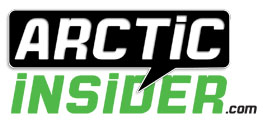

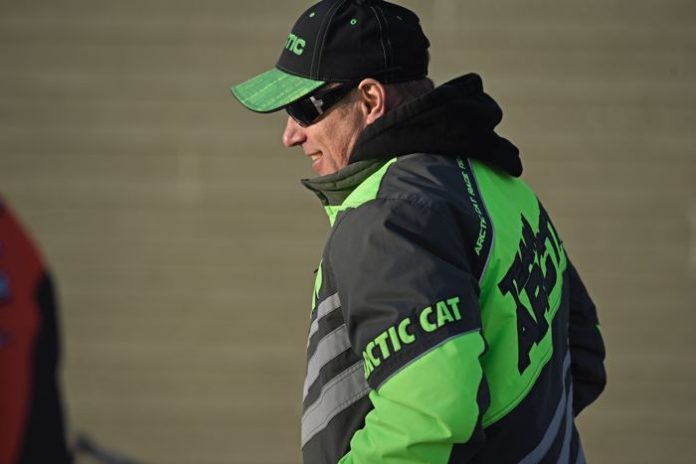
Can you ask him about the Black Cats?
Derek is a bad ass XC racer…just don’t tell his Mom how fast he is going…